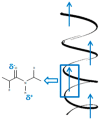Piezoelectric Scaffolds as Smart Materials for Neural Tissue Engineering
- PMID: 31936240
- PMCID: PMC7022784
- DOI: 10.3390/polym12010161
Piezoelectric Scaffolds as Smart Materials for Neural Tissue Engineering
Abstract
Injury to the central or peripheral nervous systems leads to the loss of cognitive and/or sensorimotor capabilities, which still lacks an effective treatment. Tissue engineering in the post-injury brain represents a promising option for cellular replacement and rescue, providing a cell scaffold for either transplanted or resident cells. Tissue engineering relies on scaffolds for supporting cell differentiation and growth with recent emphasis on stimuli responsive scaffolds, sometimes called smart scaffolds. One of the representatives of this material group is piezoelectric scaffolds, being able to generate electrical charges under mechanical stimulation, which creates a real prospect for using such scaffolds in non-invasive therapy of neural tissue. This paper summarizes the recent knowledge on piezoelectric materials used for tissue engineering, especially neural tissue engineering. The most used materials for tissue engineering strategies are reported together with the main achievements, challenges, and future needs for research and actual therapies. This review provides thus a compilation of the most relevant results and strategies and serves as a starting point for novel research pathways in the most relevant and challenging open questions.
Keywords: neural tissue engineering; piezoelectric scaffolds; polymers; smart materials.
Conflict of interest statement
The authors declare no conflict of interest.
Figures








References
-
- Whalin M.K., Arora S.S. Anatomy of the Brain and Spinal Cord. In: Farag E., Argalious M., Tetzlaff J., Sharma D., editors. Basic Sciences in Anesthesia. Springer; New York, NY, USA: 2018. pp. 41–59.
-
- Lis A., Szarek D., Laska J. The outlook for the use of polymeric scaffolds in the reconstruction and the regeneration stimulation of traumatic brain injuries. Polim. Med. 2018;43:302–312. - PubMed
-
- Han D., Cheung K.C. Biodegradable cell-seeded nanofiber scaffolds for neural repair. Polymers. 2011;3:1684–1733. doi: 10.3390/polym3041684. - DOI
Publication types
LinkOut - more resources
Full Text Sources
Other Literature Sources

